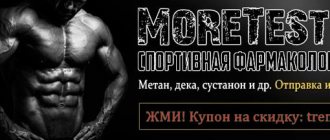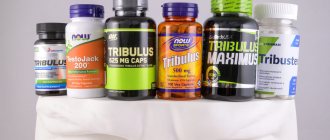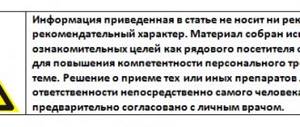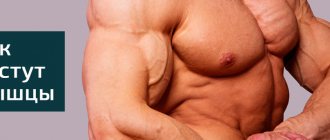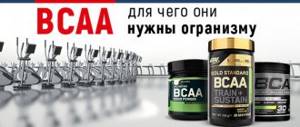The Russian Olympic team lost the opportunity to compete in this year's Olympics due to the use of performance-enhancing drugs in Sochi 2014. Yes, some athletes will be able to compete under a different flag, and in general we can say for a long time that “everyone is accepted,” but that’s not what we’re here for. It's not Olympians - not even athletes - who use these drugs on a daily basis. Anabolic steroids are a lot more popular than you thought, especially considering their possible side effects. About 3-4 million people use steroids, and that doesn't include those who don't want to talk about it.
“Anabolics” are incredibly common. Why?
Nature of pharmacological action
The effect of anabolic steroids on protein metabolism in humans is manifested in nitrogen retention, a decrease in the concentration of urea in the urine, and an increase in the content of total serum protein.
To evaluate the anabolic effect of steroid compounds in experiments and clinics, a study of the dynamics of body weight, the weight of individual skeletal muscles, nitrogen balance, and the incorporation of labeled amino acids into muscles is used as a test object.
The ratio of anabolic and androgenic activity (the so-called anabolic index) for anabolic steroids always exceeds one, and for the most active compounds it is 10-15.
According to various studies, the androgenic effect of anabolic steroids compared to testosterone propionate, taken as 100%, ranges from 2 to 150%, while the anabolic activity of some of them reaches 400-500%. This change in the activity of anabolic steroids is directly related to their chemical structure. Increasing the dose of anabolic steroids only to a certain level is accompanied by an increase in the anabolic effect. Doses exceeding this level (different for different drugs) do not cause additional nitrogen absorption. In addition to the direct anabolic effect, anabolic steroids also cause an anti-catabolic effect in relation to glucocorticoid drugs.
By enhancing protein synthesis in the main substance of bone tissue, anabolic steroids cause retention of calcium, phosphorus, and sulfur.
In this case, an increase in the concentration of alkaline phosphatase is observed, which indicates increased activity of osteoblasts.
Anabolic steroids in therapeutic doses, while stimulating bone growth in length, do not significantly accelerate differentiation and ossification of the skeleton.
In therapeutic doses, they do not cause significant virilization of women, stimulate the development of the uterus, and have a clear progesterone-like effect. On the other hand, in men with symptoms of hypogonadism, anabolic steroids contribute to moderate stimulation of sexual development and increase sexual sensation. Perhaps we are talking about different reactions to anabolic steroids depending on gender.
Anabolic steroids have moderately pronounced antigonadotropic activity, primarily affecting luteinizing hormone. Clinical determination of gonadotropin excretion has established that the dose of steroid causing nitrogen retention is insufficient for an antigonadotropic effect. To obtain the latter, it must be increased by 3-4 times.
Anabolic steroids, with reduced endogenous somatotropic activity, can increase the level of growth hormone in the patient’s blood serum.
Anabolic steroids in therapeutic doses do not have a direct effect on the adrenocorticotropic function of the pituitary gland and adrenal cortex.
Anabolic steroids somewhat reduce the absorption of radioactive iodine by the thyroid gland, reduce the concentration of protein-bound iodine, and have a natural thymolytic effect. They do not cause disturbances in carbohydrate metabolism. There is evidence of stimulation of pancreatic β-cells by anabolic steroids, their ability to reduce the breakdown of liver glycogen by influencing the enzyme systems that regulate this process, and inhibition of neoglycogenesis from protein. The natural fat-mobilizing effect of anabolic steroids (more pronounced when using fast-acting drugs) is manifested in an increase in the concentration of free fatty acids and ketone bodies in the blood. When taking anabolic steroids by elderly people, a decrease in cholesterol and lipoproteins was noted. Anabolic steroids increase weight and improve kidney function.
The mechanism of action of anabolic steroids has not yet been sufficiently studied. Their anabolic effect is not mediated by hyperfunction of the gonads, adrenal glands and thyroid gland. The participation of the insular apparatus of the pancreas and the growth hormone of the pituitary gland in their anabolic effect is possible. There are indications of stimulation of the rate of RNA synthesis under the influence of anabolic steroids.
Steroids in sports, the history of doping
The story began back in 1954. It was then that the athletes of the Soviet Union won on the world stage, setting new world records without much effort. As it became known later, during the training of athletes they used one substance (testosterone). It was then that steroids began to become popular in the sports field. There is even a legend that the Americans, after learning the secret of the success of Soviet athletes, decided to add testosterone to the program of their athletes. It is thanks to this that Dianabol (methandrostenolone) was created. Today, the use of steroids among athletes is no longer a myth, but a reality.
In all subsequent years, not a single training session of weightlifters took place without the use of Dianabol tablets. Closer to 1960, everyone saw that American athletes who trained on Dianabol simply could not find equals in the world. From now on, steroids in sports are given a separate chapter.
In the 1950-60s, big sports were involved in mastering steroid drugs. Thousands of athletes were subjected to research every day. The most interesting thing is that the first American experiments with steroids showed that these substances have no effect on athletes. Most likely, the reason for this was taking too small doses. In 1967, a series of American studies were conducted that showed simply amazing results; the IOC nevertheless banned their use. At that time, it seemed to everyone that a revolutionary drug had finally appeared, so when athletes around the world had to stop taking it, they did not understand what was the reason. It is worth noting that later the influence of steroids was studied better, side effects were discovered, and even then everyone understood why the IOC spoke so persistently about its anti-steroid policy.
Indications for use
Anabolic steroids are widely used in clinical practice. The ability of these drugs to enhance synthetic processes in protein metabolism allows them to be used to stimulate weight and improve the general condition in diseases that occur with symptoms of exhaustion, in the preoperative and postoperative periods, during radiation therapy, in acute and chronic infections, in the stage of convalescence after serious illnesses , with interstitial pituitary insufficiency, toxic goiter. When moderate doses of anabolic steroids are used, the absence of virilization in female patients and increased libido in male patients, the absence of noticeable progression of skeletal differentiation and ossification allows the successful use of anabolic steroids to stimulate the growth and physical development of premature children and patients with hypoplastic forms of short stature.
The use of anabolic steroids has also proven to be very beneficial for pituitary and cerebral-pituitary dwarfism.
Anabolic steroids have a positive effect in case of myocardial infarction, accelerating reparative processes in the heart. When they were included in the complex of therapeutic agents, positive ECG dynamics were noted, the number of aneurysms, myocardial ruptures, and so on was lower than before their use.
Anabolic steroids for rheumatism improve the condition of the myocardium and increase the indicators of nonspecific immunity. The improvement in renal function and reduction in residual nitrogen in the blood under the influence of anabolic steroids makes them a useful symptomatic remedy for renal failure, as well as nephrotic hypoproteinemia. Anabolic steroids improve the trophism of the vascular wall, increase capillary permeability, which is used in the treatment of diabetic angiopathy: nephropathy and retinopathy. Under their influence, an increase in the glomerular filtration of the kidneys and, in some cases, an improvement in the condition of the fundus of the eye were noted: resorption of exudates while maintaining, and sometimes increasing, visual acuity.
The anti-catabolic properties of anabolic steroids determine the effectiveness of their use in endogenous hyperglucocorticism (Cushing's disease, steroid diabetes) and long-term therapy with corticosteroids.
The ability of anabolic steroids to enhance protein synthesis in the bone matrix and retain calcium, phosphorus, sulfur and other minerals allows them to be successfully used in various forms of osteoporosis, long-term non-healing fractures, and osteogenesis imperfecta. To achieve an effect when treating with anabolic steroids, patients must receive adequate amounts of proteins, fats, carbohydrates, vitamins and minerals from food.
The antigonadotropic effect explains the activity of anabolic steroids in breast cancer and menopausal angioneurosis in women, and the progesterone-like effect explains the effect in functional metrorrhagia and mastopathy.
Introduction
Finally, we come to the most difficult, and for some, perhaps the most interesting topic. It is interesting mainly for one single reason - many, if not everyone, talk about it, but almost no one can correctly explain what it is. The topic of using anabolic steroids has become especially popular among beginners who mistakenly believe that such drugs are the only and irreplaceable remedy that can turn “scraggy” into a mountain of muscles in the shortest possible time.
This category of means cannot be considered either absolute good or absolute evil. This categorization is generally incorrect in its formulation. Their use can be called expedient or inappropriate only in a specific individual case. In general, whether to accept or not is neither good nor bad, it’s just a choice. And this choice must be deliberate. It is precisely in order to have something to think about that this material was created.
IMPORTANT. This article is based on materials from the book by the author Davidenko F. Yu. “ ANABOLISM PROFILES ” .
Side effects
Some anabolic steroids, mainly ethylated and methylated at position 17, active when administered orally, can in some patients (usually those suffering from chronic liver diseases) have a transient hepatotoxic effect, which manifests itself in the form of liver enlargement, the appearance of dyspeptic symptoms, and sometimes jaundice. In this case, there is a delay in the elimination of bromsulfalein, an increase in transaminases, and during puncture biopsy of the liver, cholestasis and the formation of bile thrombi in the hepatic ducts are observed. These phenomena disappear on their own within 40-50 days after discontinuation of the drugs, and in the case of treatment with choleretic drugs - at an earlier date.
With long-term use of large doses of anabolic steroids in women, side effects may occur: greasiness of the skin, acne vulgaris, deepening of the voice, hirsutism, enlargement of the clitoris, and, extremely rarely, menstrual irregularities. These phenomena are not persistent and usually gradually disappear when the drug is discontinued.
In isolated cases, anabolic steroids can cause drug allergies.
Why get tested?
Achieving any result always begins with determining the starting point. Excessive amounts of hormones, as well as their deficiency, can provoke the occurrence of various diseases. Anabolic steroids, whatever one may say, interfere with the endocrine system and contribute to the athlete’s hormonal background. To restore impaired indicators, it is necessary to diagnose endocrine disorders, which is done by taking hormone tests.
I think you already understand why they need to be taken. Tests must be taken before the course, after it and after PCT. The test results obtained before the start of the course help to record the “initial” indicators. Thus, after the course and PCT, comparing fresh tests with the original ones, you will, roughly speaking, have a step-by-step guide to restoring the normal functioning of the body.
Most often, it is necessary to take tests for: luteinizing hormone (LH), follicle-stimulating hormone (FSH), total testosterone, prolactin, progesterone, estradiol, sex hormone binding globulin (SHBG). Also, important indicators are triiodothyronine (T3), thyroxine (T4), thyroid-stimulating hormone (TSH), aspartate aminotransferase (AST), alanine aminotransferase (ALT), lactate dehydrogenase (LDH), low-density lipoprotein (LDL), high-density lipoprotein (HDL) , total bilirubin, urea, creatinine and hemoglobin. In each particular case, the list of analyzes may differ, but for the most part these indicators are influenced by AS.
Contraindications
Contraindications: prostate cancer, acute liver diseases; relative contraindications - pregnancy and lactation, acidosis in diabetes mellitus.
Bibliography:
Anabolic steroids in medicine, ed. E. V. Vasyukova and G. P. Shultseva, M., 1969; Akhrem A. A. and Titov Yu. A. Anabolic steroids, Zhurn. All-Union chem. islands named after Mendeleev, vol. 10, no. 6, p. 684, 1965; Zarubina N. A. Anabolic steroids, Probl. endocrinol. and hormonother., vol. 11, no. 2, p. 106, 1965, bibliogr.; Boris A., Stevenson R. N. a. Trmal T. A comparison of the androgenic and myotrophic activities of some anabolic steroids in the castrated rat, J. Steroid Biochem;, v. 1, p. 349, 1970; Kochakian CD Die anabole und androgen Aktivitat von Androgenen, Klin. Wschr., S. 881, 1961; Krüskemper HL Anabole Steroide, Stuttgart, 1965, Bibliogr.
N. A. Zarubina, K. K. Pivnitsky.


